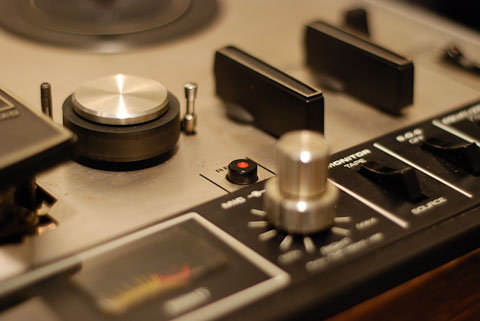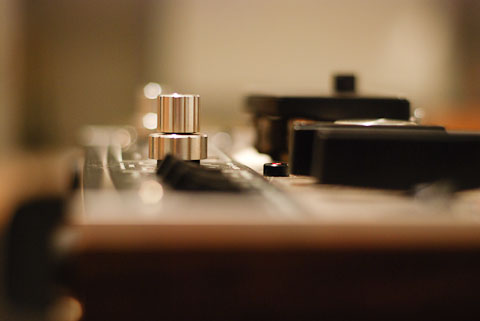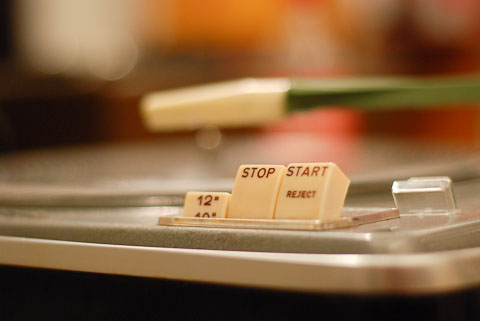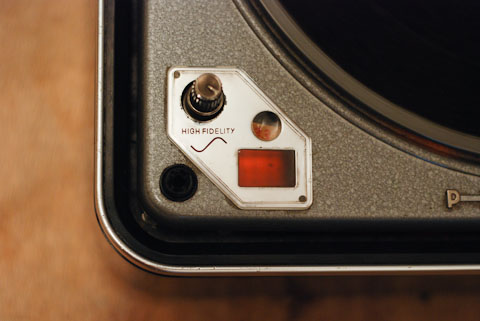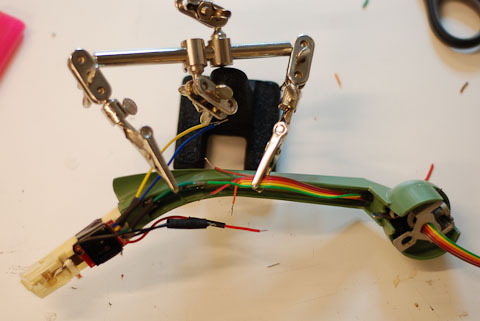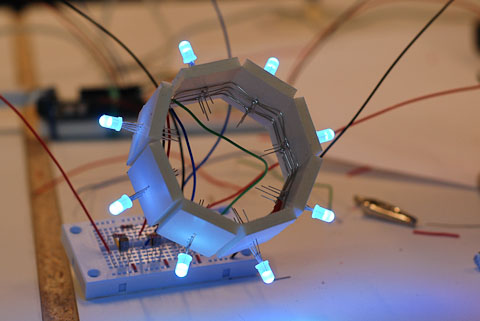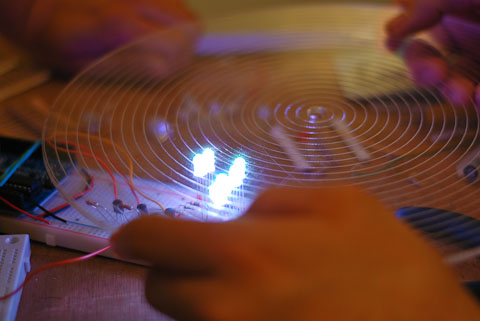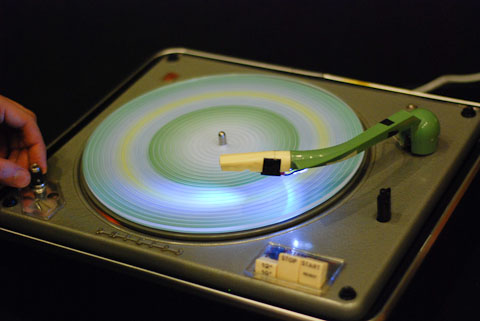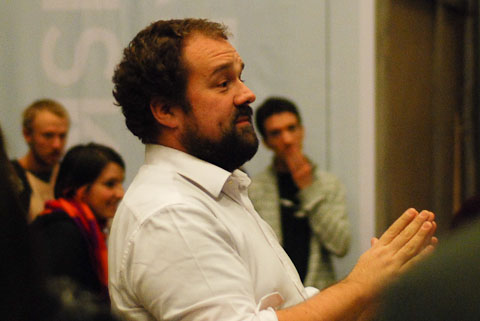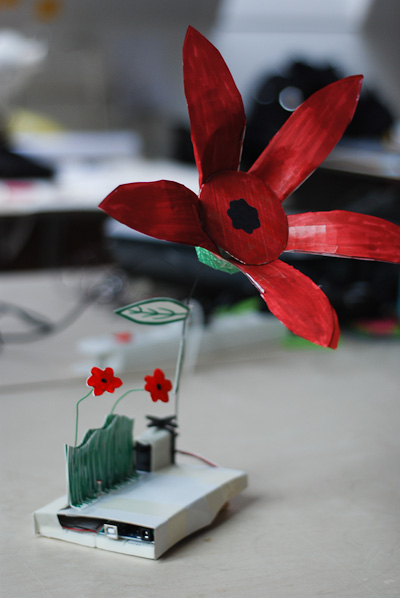Linyl, playing memories
Sunday, January 31st, 2010Linyl is the project I developed during the second week of Physical Computing, together with Shruti Ramiah, Benoit Espinola and Natalia Echevarría. Linyl is a light player that allows to create an ambience by playing discs of color created from photos or images of past experiences.
The brief was to choose an electronic object and create a new way to interact with it, “A New Soul for an Old Machine”. Natalia found two beautiful artifacts in her backyard. I spent a few minutes just playing with the knobs and switches of the tape recorder. Smooth, feeling of robustness and amazing sound. Click, clack, precise. In every movement you can feel a bunch of mechanical stuff moving inside. A complete interactive experience.
Regarding the vinyl player, amazing external design and even more amazing engineering inside. After taking out an old condenser that would probably cause an short-circuit, we plugged the player in and… surprise! It was working. After pressing ‘Start’ the arm started moving gently to the plate. The rotation speed can be manually fine-tuned using the strobe tuner.
Nostalgia and admiration are mixed while looking at these old machines…
We decided to use the vinyl player for the project, changing the functionality but keeping the ritual and the slowness of the process of playing music. But instead of music, it plays light.
One of our premises (and a challenge too) was to keep the player working. We introduced the color sensor through the arm, and the Arduino inside the player.
We build a set of eight RGB led’s with the correspondent board to be embedded in the lamp.
We laser-cutted a disc out of acrylic, engraving grooves on it. On the other hand we generated the discs extracting the main colors of the pictures.
The toughest work was to calibrate the sensor, since it’s extremely sensible to ambient light. We added a white led pointing to the disc to help the sensor read through the acrylic. The distance to the surface to be sensed was also an issue, having notable changes on the values with small variations of height.
Linyl was exhibited in DKDS during the final presentations. Bill Verplank virtually attended the presentation, asking questions and giving feedback through Skype. Mary Huang made an ‘Arduino Cake’ to celebrate the end of this exciting week.
